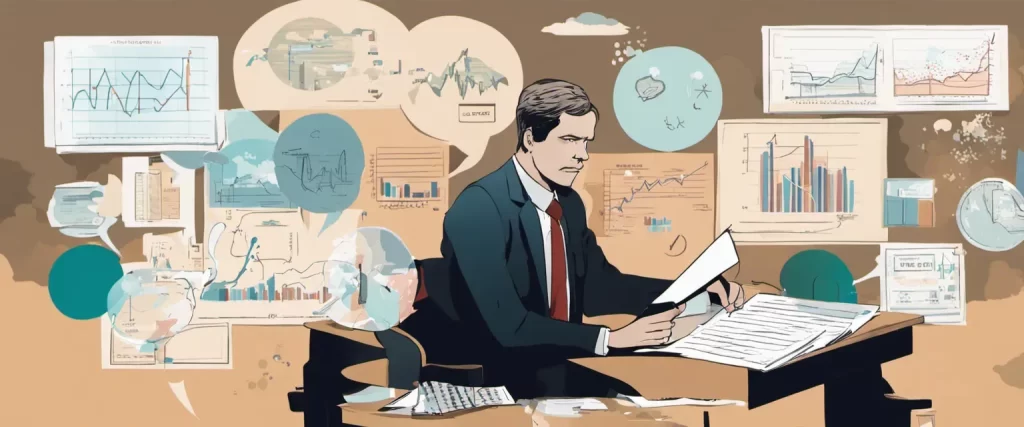
What is Economics
Economics is a social science that studies the production, distribution, and consumption of goods and services. It examines how individuals, businesses, governments, and societies make choices when faced with limited resources and unlimited wants. Economics often involves analyzing and understanding various economic systems, such as capitalism, socialism, and mixed economies, as well as studying topics like inflation, unemployment, taxation, trade, market behavior, and economic development. It is a field that uses theories, models, and empirical data to analyze and understand economic phenomena and inform decision-making at different levels, from individual choices to national policy-making.
What Can We Get From Economics?
From economics, we can get a better understanding of how individuals, businesses, and governments make decisions regarding the allocation of limited resources. Some of the key things we can learn from economics include:
1. Efficiency: Economics helps us understand how resources can be allocated in a way that maximizes overall economic welfare. It provides insights into how to produce goods and services efficiently and reduce wastage.
2. Supply and demand: Economics helps us understand the concept of supply and demand, which is crucial in determining prices. It helps explain how changes in factors such as consumer preferences, incomes, and production costs affect market equilibrium.
3. Decision-making: Economics offers tools and models that assist decision-making at various levels, such as individual consumption choices, business investment decisions, and government policies. It helps us analyze costs and benefits, risks, and trade-offs involved in decision-making.
4. Economic growth and development: Economics provides insights into the drivers of economic growth and development. It highlights the importance of factors such as investment, technological progress, education, and institutions in fostering long-term economic prosperity.
5. Incentives: Economics helps identify how incentives influence people’s behavior. It shows how changes in prices, taxes, subsidies, and regulations can impact individual and firm behavior, and how these changes can be used to achieve desired economic outcomes.
6. Market structures: Economics helps us understand different types of market structures, such as perfect competition, monopolistic competition, oligopoly, and monopoly. It sheds light on their implications for market outcomes, efficiency, and the role of government intervention.
7. Macroeconomic stability: Economics provides tools and theories to understand macroeconomic phenomena such as inflation, unemployment, economic recessions, and economic growth. It helps identify policy tools, such as monetary and fiscal policies, to maintain macroeconomic stability.
8. International trade: Economics explains the benefits and costs of international trade and the factors that drive trade flows. It helps analyze trade policies, such as tariffs and quotas, and evaluates their impact on domestic industries, consumers, and overall welfare.
Overall, economics provides a framework for analyzing and understanding the functioning of economies and societies, enabling better-informed decision-making and policy formulation.
Strategies in Learning Economics
1. Start by building a strong foundation in basic economic concepts and theories. This includes understanding terms such as supply and demand, market equilibrium, inflation, GDP, and economic systems.
2. Read textbooks and reliable economic publications to stay updated on economic theories, policies, and current events. This will help you understand real-world applications of economic concepts.
3. actively participate in discussions and debates about economic topics, either online or in person. This will help you gain different perspectives and improve your critical thinking skills.
4. Use visual aids and diagrams to understand complex economic concepts. This can involve drawing graphs to represent supply and demand curves, production possibilities, or macroeconomic issues.
5. Apply economic theories to real-life situations. This can be done through case studies, analyzing historical events, or examining current economic issues. This will help you understand how economic theories are applied in practice.
6. Seek out additional resources such as online tutorials, video lectures, or podcasts to enhance your understanding of specific topics or to gain insight from different experts in the field.
7. Practice problem-solving by working through economic exercises and problems. This will help you to grasp the practical application of economic theories and develop analytical skills.
8. Stay engaged with current economic news by regularly reading newspapers, following economic blogs, or joining online forums. This will help you understand how economic principles are applied in the real world and the impact they have on individuals, businesses, and the global economy.
9. Join an economics study group or find a study partner to discuss and debate economic concepts. This will allow you to learn from others, share ideas, and reinforce your understanding of the subject.
10. Lastly, stay curious and never stop learning. Economics is a dynamic field that constantly evolves. Continually seek new knowledge and challenge your understanding of economic theories and concepts.

Scarcity by Sendhil Mullainathan
Summary
Scarcity: Why Having Too Little Means So Much” by Sendhil Mullainathan and Eldar Shafir explores the profound impact of scarcity on our lives. The book delves into the psychological and societal consequences of living with limited resources, be it time, money, or any other form of scarcity.
The authors argue that scarcity, regardless of its form, consumes our cognitive bandwidth and diminishes our ability to focus on other important aspects of life. This cognitive tunneling caused by scarcity leads to a range of negative effects, including tunnel vision, reduced self-control, and impaired decision-making. Mullainathan and Shafir provide compelling evidence from various studies and real-life examples that demonstrate how scarcity not only affects individuals but also perpetuates cycles of poverty and inequality.
Moreover, the book emphasizes how scarcity perpetuates itself. People trapped in scarcity tend to make choices that exacerbate their situation, leading to a scarcity trap. For instance, the authors discuss how someone struggling financially may take out a high-interest loan to cover a short-term need, which ultimately worsens their financial situation in the long run.
However, Mullainathan and Shafir also explore strategies and interventions to help individuals break free from the scarcity cycle. They provide insights on how to manage scarcity mindfully, offering practical advice to improve decision-making, regain focus, and reduce the cognitive burden of scarcity.
In essence, “Scarcity” sheds light on the profound impact scarcity has on our lives, how it shapes our behavior, and the wide-ranging consequences it has on individuals and society. The book offers a valuable perspective on the psychology of scarcity and proposes strategies for navigating its challenges.
Reasons for Recommendation
1. Scarcity: The book delves deep into the concept of scarcity, a fundamental economic principle, and explores how it impacts various aspects of our lives. It provides valuable insights into how scarcity affects decision-making, productivity, and overall well-being.
2. Behavioral Economics: Scarcity combines principles from economics and psychology, making it a compelling read for those interested in behavioral economics. The book highlights how scarcity influences human behavior, often leading to irrational choices and suboptimal outcomes.
3. Poverty and Inequality: The book offers a unique perspective on poverty and inequality by examining how scarcity perpetuates these issues. It provides a comprehensive understanding of how scarcity affects individuals in poverty, impacting their cognitive abilities, time management, and long-term prospects.
4. Practical Solutions: Scarcity not only sheds light on the problems caused by scarcity but also offers practical solutions. It provides strategies to mitigate the negative effects of scarcity by addressing time management, cognitive overload, and resource allocation issues that individuals and organizations face.
5. Policy Implications: The book has significant policy implications as it encourages policymakers to adopt a more nuanced and empathetic approach when designing policies. Understanding the scarcity mindset can help in crafting policies that consider the real-life constraints faced by individuals and communities, subsequently leading to more effective solutions.
6. Holistic Approach: Mullainathan’s analysis goes beyond traditional economic theories and provides a holistic approach to understanding scarcity. By examining scarcity from various perspectives, including time, money, and social connections, the book offers a comprehensive understanding of its impact on economic decision-making.
7. Engaging Writing Style: The book is written in an accessible and engaging manner, making it suitable for both academics and general readers interested in economics. Mullainathan combines research findings, real-life examples, and personal anecdotes to present complex ideas in a relatable and engaging way.
8. Interdisciplinary Insights: Scarcity draws on research from various disciplines, including economics, psychology, and sociology, offering interdisciplinary insights that enrich our understanding of economic behavior and decision-making.
9. Timely Relevance: In an increasingly fast-paced and resource-constrained world, understanding scarcity and its effects is more relevant than ever. Scarcity prompts readers to reflect on their own behaviors and choices, allowing for personal growth and better decision-making in an age of constant distractions.
10. Influence on Economics: The publication of Scarcity sparked new research and discussions within the field of economics, making it an influential book that has contributed to evolving economic theories and the study of human behavior. Recommending the book to others fosters the dissemination of these important ideas and encourages further exploration of the topic.

Thinking, Fast and Slow by Daniel Kahneman
Summary
Thinking, Fast and Slow” is a groundbreaking book written by Nobel laureate Daniel Kahneman. The book explores the dual processes that govern human thinking – fast, intuitive thinking, referred to as System 1, and slow, deliberate thinking, known as System 2.
Kahneman delves into the biases and flaws associated with both systems. He explains how System 1, which relies on instinctive and automatic responses, can often lead us astray by jumping to quick conclusions and relying on stereotypes. In contrast, System 2, though more reliable, is often lazy and averse to effort.
The author introduces various cognitive biases and heuristics that influence decision-making, such as the anchoring effect, availability heuristic, and overconfidence. Kahneman provides numerous studies and experiments to support his arguments, shedding light on the flaws of human judgment.
The book also explores the concept of happiness and the idea that our perception of happiness is influenced by the experiencing self and the remembering self. Kahneman explains how we often prioritize the wrong things when seeking happiness, focusing more on peak experiences and moments of pain.
Throughout the book, Kahneman provides insights from his extensive research, challenging readers to rethink their understanding of human thinking and decision-making. He offers practical advice on avoiding cognitive biases and improving critical thinking.
In essence, “Thinking, Fast and Slow” has become a seminal work in the field of psychology, revealing the intricacies of human thought processes and providing readers with a deeper understanding of how our minds work. It offers valuable insights into decision-making, biases, and the limitations of human judgment, ultimately encouraging readers to become more self-aware and intentional in their thinking.
Reasons for Recommendation
1. Understanding decision-making biases: “Thinking, Fast and Slow” delves into the various cognitive biases that influence decision making. This knowledge is crucial in economics as it helps economists understand why individuals and markets sometimes behave irrationally or fail to make optimal choices.
2. Economics of behavioral psychology: The book explores the emerging field of behavioral economics, which combines psychology and economics. It discusses how human behavior often deviates from the assumptions of traditional economics, highlighting the importance of integrating psychological insights into economic models.
3. Prospect theory: Kahneman’s work on prospect theory, which is extensively covered in the book, has significant implications in economics. This theory challenges the traditional economic assumption of perfectly rational decision-making under uncertainty, offering a more realistic alternative that better captures how individuals make choices when faced with gains and losses.
4. The impact of heuristics and biases: The book covers various cognitive biases and heuristics, such as availability bias, anchoring, and confirmation bias. Understanding these biases is particularly relevant for economists as they can influence economic decisions made by individuals, firms, and policymakers, leading to suboptimal outcomes.
5. Economic policy implications: The insights provided in “Thinking, Fast and Slow” help economists and policymakers design more effective policies by considering the cognitive limitations and biases people face. For example, understanding the endowment effect can guide policymakers in designing tax policies or social welfare programs that account for individuals’ attachment to their possessions.
6. Behavioral finance: The book sheds light on the reasons behind irrational financial decisions and market anomalies. Economists can leverage these insights in developing models that better explain and predict market behavior, leading to improved financial analysis and investment strategies.
7. Prospect of nudging: The concepts discussed in the book have direct relevance to the idea of nudging in behavioral economics. Policymakers can utilize behavioral insights to design interventions that gently nudge individuals towards making better choices, improving welfare outcomes. Understanding the principles outlined in this book is crucial for economists aspiring to contribute to the field of behavioral public policy.
Overall, “Thinking, Fast and Slow” provides a comprehensive understanding of the cognitive processes that underpin decision-making, helping economists incorporate psychology into economic analysis and policy-making.
Mastering the Market Cycle by Howard Marks
Summary
Mastering the Market Cycle: Getting the Odds on Your Side” by Howard Marks is a guidebook that delves into the complexities of market cycles and offers valuable insights for investors seeking to navigate them effectively. Marks, a renowned investor and co-founder of Oaktree Capital Management, draws upon his vast experience to provide readers with a comprehensive understanding of how market cycles work and how they impact investment decisions.
In the book, Marks emphasizes the importance of recognizing and understanding market cycles, which comprise periods of booms and busts that largely influence asset prices. He highlights that market cycles are driven by human psychology, investor behavior, and the interplay of economic factors. By observing and analyzing historical market cycles, Marks aims to equip readers with a framework to identify where they are on the current cycle and make more informed investment decisions.
Marks covers various topics related to market cycles, such as risk assessment, investment psychology, and potential traps that investors may fall into. He emphasizes the significance of contrarian thinking, cautioning against following the herd mentality and investing during overly optimistic or pessimistic periods.
The book offers numerous anecdotes and examples from Marks’ personal experiences to illustrate the key concepts and principles discussed. It emphasizes the importance of balancing caution with opportunism and developing a solid investment philosophy that can withstand the ups and downs of the market.
Overall, “Mastering the Market Cycle” provides a comprehensive guide for investors to better understand market cycles and integrate this knowledge into their investment strategies. It encourages readers to become more discerning in their approach and aims to increase their odds of success by navigating market cycles with prudence and foresight.
Reasons for Recommendation
1. In-depth understanding of market cycles: “Mastering the Market Cycle” offers valuable insights into the various stages of market cycles, including booms and busts. It delves deeply into the economic factors that drive these cycles, such as investor psychology, monetary policy, and macroeconomic indicators. This knowledge is essential for understanding how markets operate and can help economists make more informed predictions about future market trends.
2. Practical analysis of economic indicators: The book provides a practical framework for analyzing economic indicators and their impact on market cycles. Marks emphasizes the importance of factors such as interest rates, inflation, employment data, and consumer sentiment in determining the direction of the market. This analysis can be extremely useful for economists looking to make sense of complex economic data and its relationship to market behavior.
3. Mitigating risks and improving decision-making: One of the primary goals of economics is to analyze and manage risks effectively. Marks’ book provides a comprehensive understanding of how market cycles interact with economic factors, enabling economists to identify potential risks and develop strategies to mitigate them. By understanding the behavioral patterns exhibited during different phases of the market cycle, economists can make better-informed decisions and potentially avoid major economic downturns.
4. Insights into investor psychology: Economics often studies the behavior of individuals, including investors. “Mastering the Market Cycle” explores the psychological factors that drive market cycles and investor behavior during different stages. By understanding investor psychology, economists can gain insights into market sentiment, herd mentality, and the impact of emotions on decision-making. This understanding can provide valuable input to economic research and analysis, particularly in the fields of behavioral economics and finance.
5. Long-term planning and economic sustainability: Marks emphasizes the importance of a long-term perspective and prudent decision-making while navigating market cycles. By analyzing past market cycles, he highlights their patterns and the implications of short-term thinking. Economists can draw lessons from this book to develop economic policies and frameworks that prioritize long-term sustainability and minimize the harmful effects of boom-bust cycles on the economy.
Overall, “Mastering the Market Cycle” offers a valuable perspective for economists by providing insights into the relationship between market cycles and economic factors. It equips economists with the tools to understand and predict market behavior, manage risks, analyze economic indicators, study investor psychology, and promote sustainable economic planning.
Pingback: The Art of Choosing: A Guide to Optimal Decision-Making - Paidread
Pingback: Lost in Choices? Let Book Recommendations Guide Your Decision-Making - Paidread